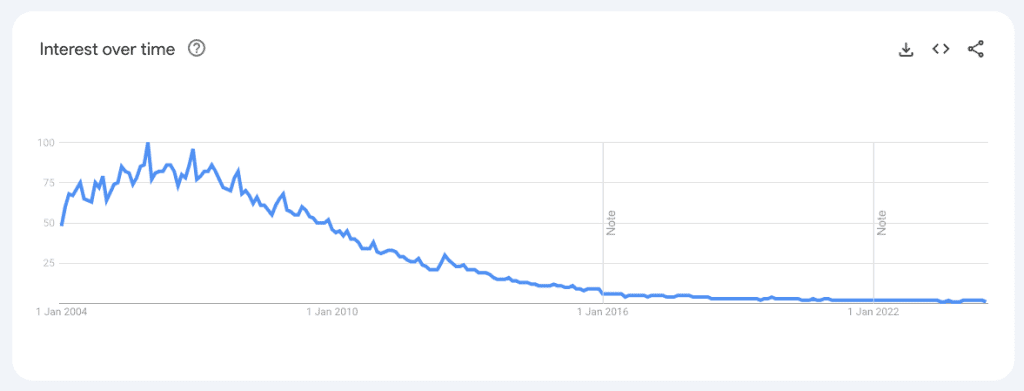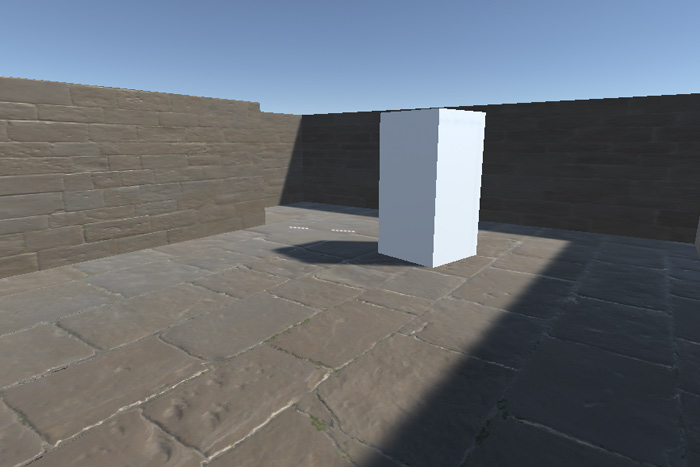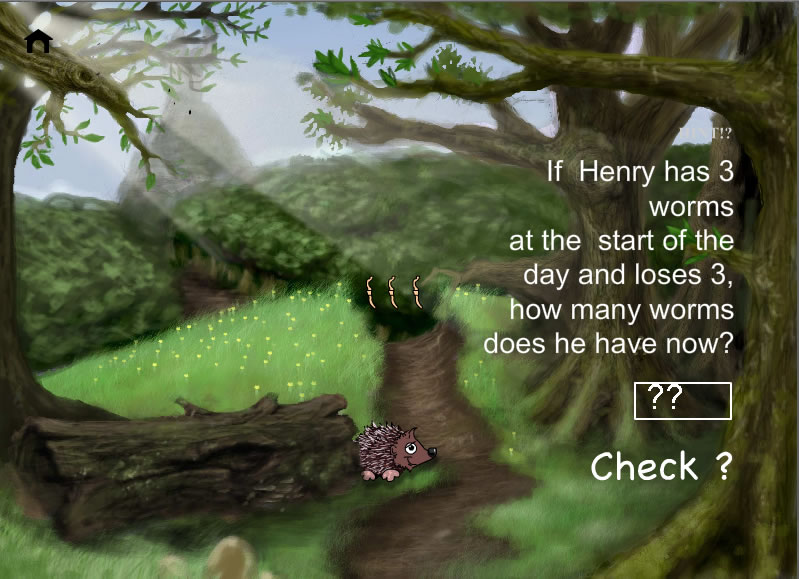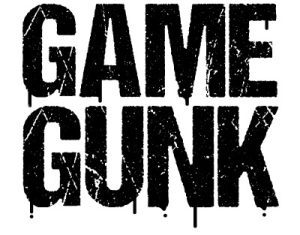Where did all the old Flash game developers go? … tumbleweeds, crickets… silence.
Flash, once ‘THE’ most powerful contender in the world of online browser gaming, enabled developers to make and publish their games. These games could be played by any potential audience that had the Flash Player Plugin.
With an eager fan base of both players and developers, Flash was everywhere. It was in schools, colleges, homes, and behind office screens, with cagey employees constantly shrinking and expanding their browser windows at the sound of managerial footsteps. Flash was very popular.
I used Flash for making games and multimedia applications when it was at its prime.
Flash made the internet fun, and game developers and animators embraced what Flash had to offer.
We loved Flash with its many faults. It was a sassy mess, plagued with a catalogue of accessibility and security issues, but its ability to hook both designers and players was all too enticing to resist. We were a community.
Flash was the de facto application for making browser games from the mid-1990s to the mid-2010s. Any self-respecting indie game maker had Flash in their tool kit. I practically studied it – and ActionScript.
But all things come to pass. Flash fell out of favour, and the plugin was stopped. But… what of the developers behind the tools?
Flash developers did not vanish. Flash and its user base were too numerous to evaporate into nothing. With the dissolution of Flash, this left many developers stranded with games that no longer worked.
Where did they … ( we ) go?

“In the ever-evolving and fast-paced world of tech, what is valuable today, can be worthless tomorrow.“

Where did all the Flash game developers go? The short cumulative answer
As a cumulative answer to where all the Flash game developers went, many either changed careers, adapted to using HTML5, learned alternative software or did nothing. By and large, the end of life for ‘Flash Player’ equated to the end of life ( in a professional sense ) for Flash game developers – or Animate developers to be precise. When Flash developers, or “Flash Devs” could no longer publish Flash games and Flash content to what was once a common web player. Our skills and knowledge of using Flash became nigh obsolete. All those years and experience in using the software faded to nothing within a space of 10 years.
We were left with few obvious choices: either adapt to alternative programs and languages or change skills and direction. Flash was gone, along with its prime and its era.
I am still in touch with some fellow students and Flash developers. I have written more below about what may have come to pass with others.
But to start, it helps to know what happened to cause the dispersal of all the Flash developers in the first place.
What happened to ‘Flash’ that caused such a large migration away from the software?
It should be noted that the migration from Flash was not an abrupt phenomenon. Support for the ‘Flash Player Plugin’ and flash games, was already in decline from the mid-2010’s. Newer technology, smartphones, web accessibility, and security were just some of the reasons for Flash Player falling out of favour.
Specifically, it was ‘Flash Player’ and not so much ‘Flash’, that was discontinued. Flash – also the platform that was used for making games by Millennial game developers, became ‘Adobe Animate’.
It was the Flash Player that was fundamentally stopped. Flash – the platform used for making said content which ran through the player, changed its name it’s name to Adobe Animate.
Many of my games and applications created in Flash stopped working when the Flash Player Plugin was discontinued, but in truth, many of these multi-media applications stopped working long before.
Continuous updates required by the Flash Player, and the arrival of the mass-market Smart Phone ( the iPhone ), were the first critical blows to the late Flash Player. Experiencing Flash content through a website on a smartphone was an awkward and clumsy affair, that would deter most users. From experience, typically, playing Flash games on a smartphone web browser provided an awful user experience that required additional downloads to work. In most instances, this required users to download Flash player or at least an emulator from the app store or Google Play.
The entire process was irritating and tedious. the majority of players would not go through this process to play your game through a mobile browser.
Flash asked too much from the end user. The experience from start to finish was awkward and ugly most of the time.
So.
The chances of users doing this… were slim
What happened to Flash to make us all flee for the horizon? It was passed its prime and asked too much from the end user to function correctly with security issues and demands for frequent updates.
The technology giants didn’t like Flash.
Flash was also an SEO nightmare.
Better software ( widely shared opinion ) for making games came out.
There is a lesson here. Never let a piece of technology or game engine be a defining skill. In the ever-evolving and fast-paced world of tech, what is valuable today, can be worthless tomorrow.
Where did all the Action Script 2 and 3 developers go?
ActionScript 2.0 and 3.0 were part and parcel of Flash. This language is what gave Flash its interaction and logic. It was also a starter language for many in using object-orientated programming. ActionScript inspired many people to learn how to code so they could make games – myself included.
When Flash fell from favour, so would the popularity of ActionScript. Many ActionScript developers would have sought other languages and technologies to make applications and games – such as HTML5 and Javascript.
As a designer with knowledge of ActionScript 2.0 and 3.0. I can say with some comfort that I have not written a line of ActionScript since 2016 – give or take.
As part of my commercial portfolio. You look at some samples here on an external blog.

– My game examples made in Flash & ActionScript
– Theory of having to conceptualise a story game in Animate
What else caused the migration? Flash was already in decline by the mid-2010’s
Before the demise of Flash Player, Flash had an active community of both players and creators. If statistics are anything to go by – see illustration – it would appear evident was in decline. Those who noticed the decline either sought other opportunities or gravitated away from Flash for making games.
Topic Studies According to Google Trends :
“Flash Games”
From 2004 – 2024 Shows a significant decline from around 2012. This would imply that people were searching less on Google for games. Or that games were most likely being played elsewhere.
– Data sample taken for UK – Google Trends

I can personally vouch that my demand from work in using Flash completely dried up! I was already becoming quite aware of Flash falling out of favour. Both for web use and for making games.
Where are Flash developers now?
I believe many Flash game designers and developers have moved to pastures new, including myself.
There are no professional job offerings that I could find that require knowledge of ‘Flash’ in 2024 at the time of writing this. However, that isn’t to say that there aren’t any, but with the lack of offerings on more common job boards, it would suggest that the requirement to use Flash is extremely low.
My source for this information comes from Google, Behance, and Linkedin. It is a small pool of data for this article. But I have also carried out other searches sporadically over the years and have come across nothing that requires ‘Flash’. Adobe Animate is a different matter however.
This may come across as doom and gloom, but technology is prone to rapid and seismic change. Some of these changes can also be positive, if not painful.
Of the former Flash designers I know, It is my understanding that many gravitated towards using other tools and technology such as Unity.
From my own experience, I use Adobe Animate from time to time, but I no longer use Flash or Flash Player.
Why I stopped using Flash
Here is a list of reasons as to why I gravitated away from Flash and ActionScript.
- No longer popular. Flash, as it was formerly known, is no longer used at a mass-market level. ‘Flash’ was replaced by Adobe Animate. I use Adobe Animate when required. More of this can be read under ( external websites ) www.jimmsdesign.co.uk
 , or on the Design Bytes blog
, or on the Design Bytes blog .
. - Less demand. Towards the latter end of the 2010s, I was receiving fewer requests to use Flash or Action Script for development. With this, I gravitated towards learning alternative and popular software for games. Currently, I’m in the process of remastering some of my old Flash projects in Unity and Adventure Creator. I have also written a post here – Is Adventure Creator good for 2D games?
- The demise of Flash Player. With Flash Player being shut down, my older Flash projects and Flash games ceased to work – they had no way of being played without the mass installation of the Flash Player Plugin. And remember, Flash Player was discontinued by Adobe. What would be the point in creating something for Flash Player, when it would hardly be played, or not at all? Unless Rumble fills a gap, time will tell. I have written an article – 11 reasons to avoid using Flash player today.
Those are some of the reasons as a former Flash creator why I stopped using Flash. My case is largely similar to everyone else… Flash was past its prime, and business didn’t really care, and this is what I did instead – learned something new and looked elsewhere.
Where did I go as a Flash Developer?
Not far, when Flash Player was stopped I was in a permanent work position at a company, it was just a tool that I no longer used. I also had to go through and remove all the Flash elements on the company website. I stayed in the position and just stopped using Flash.

Where did all the other Flash game developers go? The herd migration
When Flash and the Flash Player Plugin were discontinued, there was a mass migration away from these pieces of software. However, in truth, the migration away started long before the official closure of the Flash Player Plugin and rebrand of Flash. Flash was giving way to dedicated game creation software and changes in web standards and how where people played games.
Ultimately, Flash game developers were left with no other choice but to seek alternative solutions and software so migrated to other software and standards such as Unity, Unreal Engine, and other programs that allowed them to make games.
Developers had moved on. And here are some more details of where they migrated to.
Flash developers stuck with Adobe and worked with ‘HTML5’
Not all Flash game developers deserted Flash – or what became Animate. Some developers stayed with the software to continue making games. Once Flash evolved into Animate and Flash Player was closed, the call for HTML5 replaced the need to output to Flash Player.
As somebody who had formal training in ‘Flash’. I have used Adobe Animate to dabble with HTML5.
Flash game developers moved to Unity
Guilty as charged! I eventually started to use Unity.
Unity’s popularity exploded in mid-2010’s. This may be in part due to Flash’s decline in popularity and game developers seeking better alternatives for making their games. This is when developers found the likes of Unity for 2D and Unreal Engine.
Unity was a hot competitor. It could do all that Flash could do with developing games, and an awful lot more. A setback with Unity was the jump from working within the Flash IDE ( Integrated Development Environment ) to the Unity IDE. The jump was great, but far more enabling for making indie games and for opening doors as a whole.
I was also part of the migration from Flash. Unity is such a powerful IDE and more. Unity can create rich media, browser games, and… standalone games the list continues.
The possibilities were far greater with Unity. I didn’t look back. And you can also use Unity to publish to HTML5.

This was a 3rd person tutorial I followed from the Unity in Action book.
Flash / Animate developers changed careers
With the discontinuation of Flash Player, Flash game developers sought other career paths to eke out a new living in the ever-changing technological landscape.
In addition to browser games, Flash was heavily integrated into advertising, gambling, and web development industries.
Many developers likely made lateral shifts into similar occupations such as web development, website coding, website design, or e-commerce.
Other former Flash game developers would have also made a complete change of career into unrelated fields.
Some Flash game developers did nothing…
It would be easy to say, that many Flash Developers – including myself, did nothing with regards to mitigating the damage by the end of life for Flash Player.
Flash or knowledge of flash, just became something that my role no longer required.
While some Flash game developers did nothing and stayed in the same career or positions, others retrained and moved to different software. Although I initially did nothing drastic, I gradually started to retrain in other software.
‘Limmy’ was a Flash developer
When considering the topic of where all the old flash game developers went – I wanted to highlight the Scottish comedian – “Limmy”. This prolific streamer was once a Flash developer too.
‘Limmy’ traded all that Flash development and design to forge ahead in comedy. There is more on him here. ( Wikipedia )

The students from my Flash Development course at university
I used Flash extensively in my course while attending ‘Uni’ in Carlisle. From designing my first e-learning game in Flash 8 to learning Action Script 2.0, it was there that I really learned the potential of Flash. There after, I used Flash in commercial settings and on freelance projects.
I knew a few students who also invested a lot of time energy and effort into Flash. Of the students I am still in touch with, most of them either went down the website development path or went into other digital media jobs.
Below is an example project I created on that course, way back when.

Where did all the old Flash game developers go? – My Story
Since 2007, my knowledge of Flash and ‘intermediate’ knowledge of ActionScript were ‘some’ of my unique selling points. Alongside, various other students used Flash for making Multimedia and games.
My knowledge of Flash and ActionScript paved the way for me to work on interesting projects both personal and professional. But As time passed, I found myself using Flash less. Career and demand for the skills that came with the program faded into the background and set in motion my migration. I sought alternative applications and programs for making both games and multimedia. Flash was on the out, other programs were on the way in, and this is where – like many – I invested my energy, finding alternatives to this once golden program.
I explored new engines, new applications, and new solutions! Anything suitable for making games and multimedia in the emerging mobile and browser market. I dabbled with Wintermute Engine, Stencyl… and Unity.
Wintermute Engine was used for making classic graphic adventure games, such as The Lost Crown by Darkling Rooms.
Stencyl was used as a no-code alternative for making 2D games. As an example, I have created a custom cursor tutorial in Stencyl.
Flash had its day, and what a good day it was. I moved on to other things and jobs demanded that I know different things.
Where did all the old Flash game developers go? The Wrap Up
As a final wrap-up regarding where all the Flash developers and game designers went, many cast their career nets further afield, retrained, or sought alternative engines for making games. in terms of the locality, it is very possible if they worked on a freelance basis that they either focused on other skills to sell, or remained freelance. Or relocated to find other work, each case by case is different.
Those that used Flash for making games, would most likely have learned some other program or game-making engine to create their games. If they however stayed in the same job, the chances are they would not have moved and may have stayed in the role, retrained internally, or sadly, faced redundancy.
I have attached some interesting links below to my design a projects blog – these links will take you away from game-gunk.com.
3rd Party Design Blog
- Examples of what you can create in Adobe Animate

- Making a story game in Adobe Animate
- Animation Examples made with Adobe Animate
Other topics around where did all the old Flash game developers go?
- 11 Reasons to Avoid Flash Player Plugin
- Do people still play browser games
- Is ActionScript still used?

More on where did all the old Flash game developers went – Other sources :
Source –
The Story of Flash

